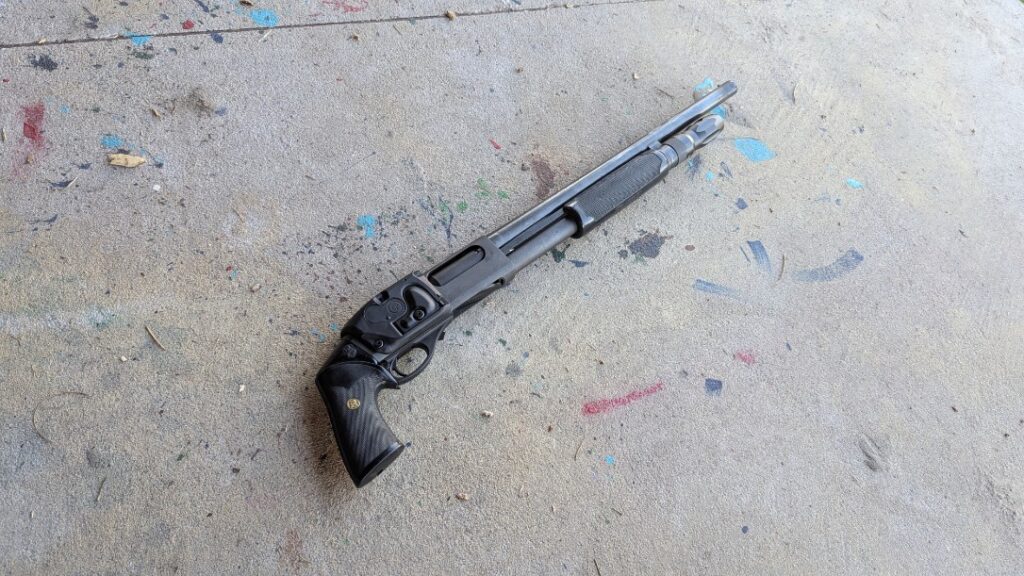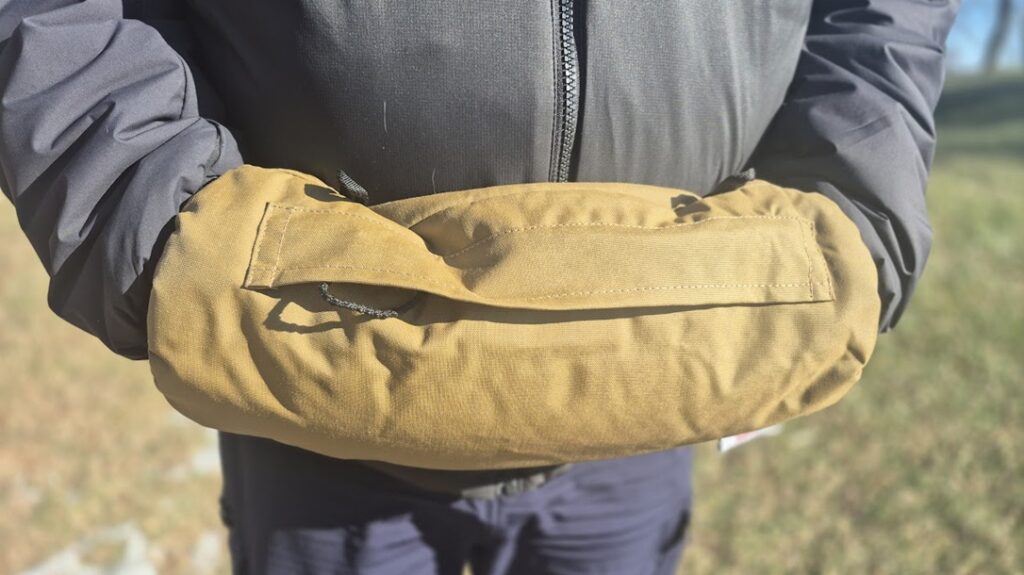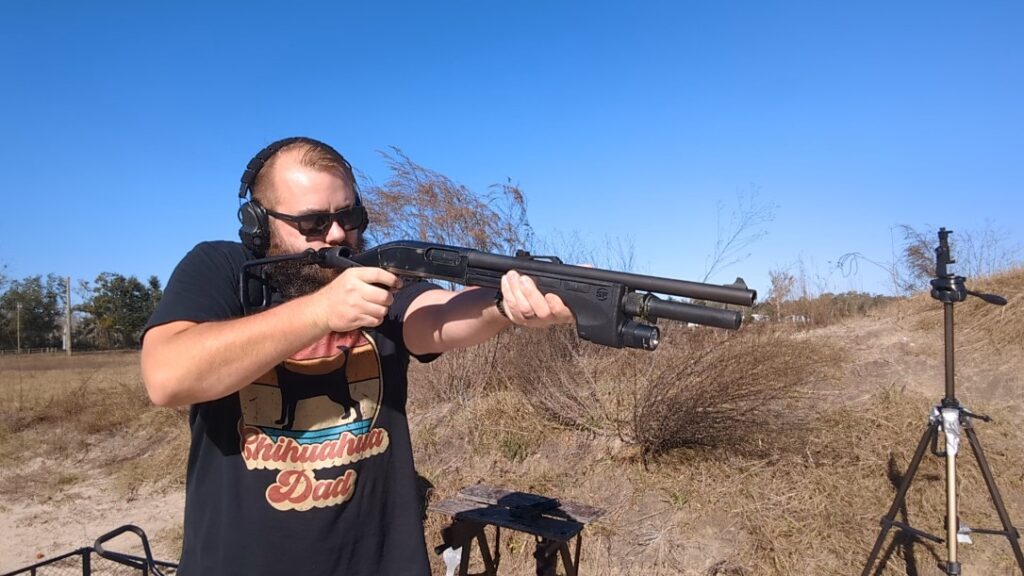The Smith & Wesson Safety Hammerless, a five-shot top-break double-action revolver dating back to 1887, is one of the most iconic handguns of the “turn of the century.” Its production lasted through 1940, just before the onset of the Second World War. During its lifetime, the Safety Hammerless, was also colloquially known as the “Lemon Squeezer” or the New Departure. It set the tone for the design language of what was arguably the first compact modern centerfire carry revolver.
Safety Hammerless guns were so prevalent that they were reproduced by other gun companies with both cheap and elaborate clones. These pocket revolvers were available in either .32 S&W or .38 S&W chamberings. Both were still loaded with black powder during the late 1800s. By the time their production ceased in 1940, top-break revolvers like the Safety Hammerless were beyond technically obsolete, both in actions and calibers*.

Advertisement — Continue Reading Below
Smith & Wesson’s Genesis
The Smith & Wesson Safety Hammerless owes its existence to the implementation of the Smith & Wesson Model 1. It was the company’s first official product, and a diminutive rimfire revolver chambered for .22 Short. The single-action Model 1 presents a significant milestone in revolver history. It became the first revolver to use self-contained metallic cartridges instead of “cap and ball” ammunition.
Model 1 revolvers had a hinge at the top of the frame near the barrel junction and broke from the bottom to remove the cylinder. This cumbersome tip-up design evolved into the top-break Model 2. The Safety Hammerless itself is an iteration and refinement of the Model 2. It was optimized for safety and a smooth user experience as a carry piece.
Famously, the Safety Hammerless got rid of the exposed hammer, enclosed the double-action-only trigger in a trigger guard and incorporated a grip safety into the grip’s backstrap.
Advertisement — Continue Reading Below

Top Break Actions
By the 1880s, top-break revolvers, which incorporated a hinge and latch to allow the revolver’s frame to break open at the corner of the frame closest to the hammer and expose the rear face of the cylinder and charge holes to load cartridges, were the most sophisticated and “fastest” revolvers to-date.
Cylinders that swung out like today’s revolvers (called hand-ejector models at the turn of the century) weren’t invented yet. Top-break mechanisms are quite novel and sophisticated in their own right. However, their biggest drawback was frames of moderate strength only. The lack of robustness limited top-break guns’ chamberings to lower pressure and milder ammunition. This contributed to their eventual obsolescence.
Advertisement — Continue Reading Below
Simply put, top-break actions could not keep up with the ever-evolving pressures and muzzle velocities generated by more modern propellants and cartridges. By chance, the Safety Hammerless’ production run happened to overlap with this fascinating time in the history of modern firearms development.
The Hammerless Evolution
Throughout the production run of the Smith & Wesson Safety Hammerless, the revolver saw five different “model changes.” This was the 19th-century equivalent of very early Smith & Wesson “engineering changes.” Modern shooters would refer to this as “dash-and-a-number” in post-1957 Smith & Wesson revolvers–e.g., Model 19-3, 586-4, 10-14, etc.
Most of the Safety Hammerless revisions involved modifying and improving metallurgy in order to accommodate rapidly evolving commercial ammunition as smokeless propellants improved at warp speed. In fact, for the first three model changes to the Safety Hammerless, Smith & Wesson didn’t necessarily guarantee that smokeless cartridges would be fine to shoot.
Advertisement — Continue Reading Below
By the fourth engineering change in 1898, the S&W catalogs had changed their verbiage. As a rule of thumb, it would be best to avoid any modern commercially loaded .32 S&W or .38 S&W cartridges in any Safety Hammerless built prior to 1898.
The .38 S&W Cartridge
It’s worth noting that the .38 S&W cartridge is not interchangeable with the later .38 Special revolver cartridge. However, the former does predate the latter by at least 21 years. Because of the prevalence of top-break revolvers of all sizes from the United States, Britain, and beyond, the .38 S&W cartridge enjoyed mainstream relevance until its sunset during the middle of the 20th century.
To this day, major ammunition producers like Fiocchi and Magtech still offer a standard .38 S&W round-nose cartridge. I sourced a few boxes of said ammunition through Lucky Gunner.
Advertisement — Continue Reading Below

History of the .38 S&W
The .38 S&W first came on the scene a decade before the Safety Hammerless, in 1877. It made its debut alongside the Smith & Wesson Model 2 single-action revolver, whose DNA was later passed down to the New Departure/Safety Hammerless. The original black powder-loaded .38 S&W cartridge used a 148-grain heeled bullet. Its diameter matched the dimensions of the case’s diameter, just like a .22 LR cartridge.
The heeled bullet’s outer diameter actually measured .038 inches, but these projectiles proved to be less reliable in then-modern revolvers. Smith & Wesson tweaked the bullet but kept the “38” in the cartridge’s name. The “finalized” bullet diameter for .38 S&W is .361 inches, just slightly wider than the .38 Special or .357 Magnum’s nominal .357-inch diameter.
Advertisement — Continue Reading Below
Visually, a .38 S&W cartridge resembles a 9mm Luger cartridge. However, it has a rim and straight case walls instead of the tapered counterpart of the 9mm Luger. Likewise, .38 S&W rim and case head dimensions are also slightly larger and not interchangeable whatsoever.
Standard factory loads use 145- or 146-grain bullets. They no doubt had a mild load in the interest of safety to prevent catastrophic incidents when fired through older revolvers such as the one I’m writing about.
Lasting Relevancy
The success of both the New Departure/Safety Hammerless along with that modern metallic centerfire cartridge before the turn of the century compelled the British Commonwealth to adopt the .38 S&W. The Commonwealth loaded it with a 200-grain soft lead bullet for some of its own top-break service revolvers.
Advertisement — Continue Reading Below
Besides the ubiquity of these hammerless pocket revolvers in the United States, the British Commonwealth’s use of the .38 S&W cartridge helped keep it relevant internationally.
To be Continued in Part 2…
Special thanks to Lucky Gunner for providing some .38 S&W ammunition for this project.
Advertisement — Continue Reading Below















